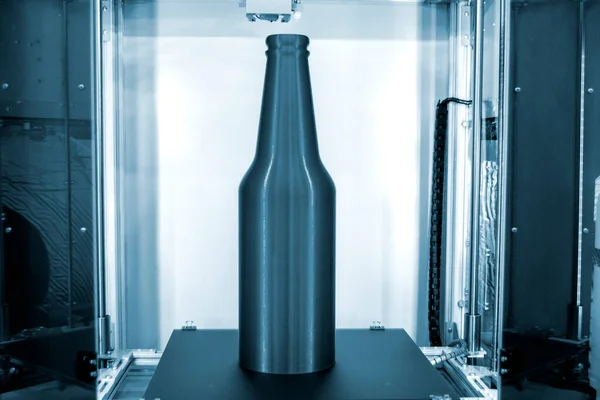
3D printing has transformed many industries, from manufacturing to healthcare. It is also rapidly gaining popularity in the culinary world. Did you know that nearly half of the kitchen tools you use daily for breakfast or baking might have been created using food-safe 3D printing?
You can create everything from custom cake molds to reusable tableware with the right equipment and knowledge. However, creating food grade 3D printed models and dishwasher safe filament is no easy task, as it requires close attention to materials, processes, and safety standards. Today, we’ll explore how to make food safe 3d printer filament and ensure they are safe for use in your kitchen or business.
What Does Food Grade Filament Mean?
Before diving into the printing process, it’s important to clarify what "food grade" means. A food grade filament is made from materials that are safe for direct contact with food, without causing harm or contamination. In 3D printing, this involves choosing materials and food safe coatings that comply with safety regulations, such as FDA/SFDA or EU standards, and ensuring the final product has a non-porous, smooth surface to prevent bacterial buildup.
Step 1: Choosing the Right Materials
Not all 3D printing materials are food-safe, but there are several excellent options:
● PLA: A biodegradable plastic derived from renewable resources like corn. While food grade PLA is safe in its raw form, its natural porosity requires additional treatment to make it truly food-safe. It’s great for cookie cutters or cake toppers.
● PETG: A durable, non-porous filament less likely to absorb moisture or bacteria. PETG is widely used as a food-safe filament for applications such as reusable food storage containers.
● Nylon: Strong and flexible, though it requires FDA/SFDA certification to ensure it’s safe for food contact. Proper cleaning is essential to maintain its food-safe properties. Example use: sturdy utensils or custom molds.
Tip:
Always check for certifications (e.g., FDA/SFDA-compliant labeling) when purchasing food-safe 3D printer filaments to ensure their safety for food-related projects.
Step 2: Printing with Food Safety in Mind
When creating food grade 3D printed models, it’s not just about choosing the right food grade filament but also the printing conditions and settings. Follow these rules:
● Use a Clean Printer: It’s best to use a separate 3D printer for food-related projects or thoroughly clean your existing printer. This helps prevent cross-contamination with non-food-safe materials.
● Choose a Food-Safe Nozzle: Replace brass nozzles with stainless steel ones, as brass may contain lead, which is unsafe for food contact.
● Avoid Contaminated Surfaces: Disinfect your workspace thoroughly, and handle the printed model with clean gloves.
Step 3: Post-Processing for Food Safety
The natural porosity of 3D-printed models can trap food particles and encourage bacterial growth. Post-processing helps smooth these surfaces and ensures they are safe for food contact.
Steps for Post-Processing Food Grade Models
● Sanding: Use fine-grit sandpaper to smooth the surface of the model. This reduces small crevices where bacteria can hide.
● Washing: Thoroughly wash the model with food-safe soap and warm water.
● Sealing with Food-Safe Coatings: Apply a food-safe coating, such as a food safe epoxy or food grade resin, to create a non-porous barrier. Look for FDA-approved options, such as XTC-3D epoxy, specifically designed for 3D printing.
● Curing: Follow the manufacturer’s instructions to properly cure the coating before using the model with food.
By carefully selecting materials, following proper printing practices, and applying thorough post-processing, you can create 3D-printed food grade models that are safe and functional for your kitchen or business.
Common Challenges and How to Overcome Them
1. Ensuring True Food Safe Filament
Some materials may claim to be food-safe but lack certifications. Always research and purchase from trusted manufacturers. Additionally, consult regulatory guidelines like those from the FDA/SFDA or EU to ensure compliance. For example, using a filament labeled “food-safe” isn’t enough — verify its certifications and suitability for your intended use.
2. Porosity of 3D Prints
Even with food-safe filaments, 3D prints are naturally porous. Post-processing with sanding and sealing is essential to overcome this. Ensure you follow all steps meticulously, including curing the food-safe coating properly, to create a smooth and non-porous surface. For high-moisture environments, consider additional protective layers to enhance durability.
3. Durability of Coatings
Food-safe coatings can wear off over time. To maintain safety, regularly inspect and reapply coatings as needed. Frequent washing and contact with utensils can erode the coating faster. To counter this, use high-quality, durable coatings and follow care instructions, such as avoiding abrasive cleaning tools. Testing your models periodically for wear and tear ensures long-term usability.
4. Heat Resistance
Some food grade 3d filament, like PLA, have a low heat resistance, which can cause warping or deformation when exposed to hot foods or liquids. To address this, opt for higher-temperature materials like PETG or specialized heat-resistant nylons. Additionally, verify the thermal limits of your filament and consider this during the design phase to ensure functional longevity.
Creative Applications of Food Safe 3D Printing
The possibilities for food-safe 3D printing are endless. Here are some inspiring examples to get your creativity flowing:
● Custom Cake Molds: Create molds in unique shapes for weddings, birthdays, or other celebrations. With 3D printing, intricate designs — like logos, text, or floral patterns — can be easily replicated, adding a professional touch to homemade or bakery creations.
● Chocolate Molds: Use 3D-printed molds to design intricate chocolate decorations for desserts. From personalized monograms to themed shapes for holidays, chocolatiers can experiment with innovative and detailed designs.
● Reusable Utensils: Print eco-friendly utensils for picnics or events. Custom designs can include ergonomic handles or branding, making them both practical and memorable. For eco-conscious individuals, these utensils provide a sustainable alternative to disposable plastic cutlery.
● Food Storage Solutions: Develop custom containers tailored to your kitchen needs. For example, you can print stackable spice jars with built-in labels or storage boxes designed to fit specific pantry spaces.
● Specialty Tools for Chefs: Professional chefs can use food-safe 3D printing to create tools for specific tasks, such as precision garnishing tools, custom-sized measuring cups, or unique plating templates that elevate dish presentation.
Businesses are already leveraging this technology to offer personalized culinary tools, setting them apart in the food and hospitality industries. Restaurants and bakeries, for example, can create branded molds or utensils to enhance their customer experience. In the world of catering, customized serving tools can leave a lasting impression at high-profile events.
Is Food Safe 3D Printing Worth It?
Absolutely! Food grade 3D printing offers unparalleled creativity and customization for both home cooks and businesses. While it requires careful attention to materials, printing processes, and post-processing, the results are worth the effort. Whether you’re designing unique culinary tools or buying custom models, this innovative technology can elevate your cooking and dining experiences.










